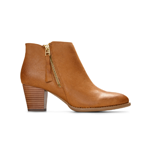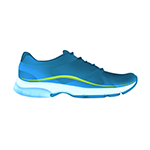
Simple Ways to Prevent High Heel Pain
Love the style of high heels, but not so fond of the discomfort that standing and walking in them can cause? We don’t blame you! No fear—support is here—to help alleviate and minimize the pain, so you can feel as good in heels as you look while wearing them!
Why Do They Hurt So Much?
Design, simply put, is the culprit. The elevation of the heel shifts your body weight forward (which would otherwise be evenly distributed in a flat-style shoe) toward the balls of the foot, aka the “metatarsals.” This forward shift in body weight creates a misalignment of the entire skeleton, causing your knees and hips to also go forward, which hyperextends your back in the opposite direction to keep you balanced.
Not surprisingly, this can cause a whole host of other issues:
- lower-back strain
- shortened achilles tendons
- bunions and hammertoes
- pinched nerves
- stress fractures
- arthritis of the foot
- toenail problems
Fun, right? Thankfully, if you’re a true aficionado you don’t have to abandon high heels totally, but perhaps consider making them the exception, not the rule, as your go-to shoes.
Time-Outs Are Rewarding
Heels shouldn’t be worn all day or everyday—especially for long periods of standing and walking. Alternating shoe styles throughout the week, and even throughout the day, is great for long-term foot health. Plus, doing so allows you to climb back into your heels with fewer issues when you’re ready to take it up a notch again.
Consider Your Specific Concerns
Choose styles that accommodate any bone spurs, hammertoes, bunions or wider-width feet. Wearing the correct right size and width will save your soles!
Build a Varied Wardrobe
Sure, spring for the thin-heeled stilettos for special occasions, but also invest in heels that have built-in arch support and a chunkier design, such as wedges, espadrilles and block heels. When choosing flats for those off-heel days, remember that there is such a thing as too flat! Sensible shoes should have thicker sole, arch support, as well as cushioning/shock absorption.
Commit to Foot Exercises and Relaxation Techniques
As with everything, an ounce of prevention is worth a pound of cure, and putting a bit of time into these simple routines can have a big impact on your foot health:
- Calf Raises
Stand up straight, then push through the balls of your feet and raise your heel until you are standing on your toes; lower slowly back to the start and repeat. For balance, place your hand on a counter or table as you do it, becoming more stable over time. Raises not only keep your calves strong, they also maintain achilles tendon strength and are often used in physical therapy for tendon injury recovery.
- Calf and Foot Stretches
Elongating muscle is key to keeping it flexible for wearing heels. These can be done sitting, in downward dog yoga position, against the wall in a runner’s stretch position or on a stair.
- Toe Grips
Pick up an object with your toes (like a t-shirt, thin towel or socks), hold for 10 seconds, release and repeat. This works the smaller muscles of the feet and toes which are also ankle stabilizers. You can do this while standing, laying on your back or side, or while seated in a chair.
- A-thru-Zs
Draw the letters of the alphabet in the air with your big toe, moving only your ankle. This works all of the major muscle groups of your leg. Don’t worry, most people need a break midway through this drill—see if you can get to a new letter each time you try!
- Balancers
Practice standing on one leg at a time: this helps proprioception, the balance nerve receptors in your legs, ankles and feet. Again, there’s no shame in the game if you place your hand on a counter or table as you do it, becoming more stable over time.
- Massage
Get professional massages regularly if you can, but also do a self massage to your calf muscle, achilles tendon and arch of your foot.
- Icing
Ice your heels, arch, and ball of feet for on/off intervals of 15 minutes each; apply it to areas that are sore or puffy. Ice is a safe and natural anti-inflammatory!
- Foam rolling
A foam roller is a great tool to have around the house for relieving tension and loosening tightness in calves, achilles tendons, arch of foot, upper leg areas and lower back.
We wish you the best of luck with all of the above—these tips should definitely make a difference in how your feet feel. Here’s to many happy hours in heels ahead!
SHOP WOMEN’S HEELS










